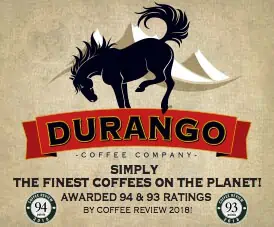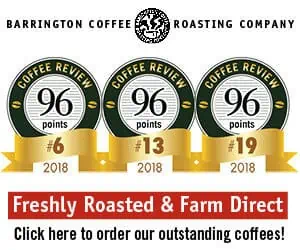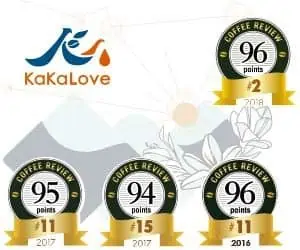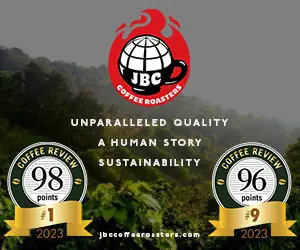Some adjectives become so firmly stuck to coffee country names that they almost lose their meaning. Antigua and Guatemala may be such a combination, so familiar together that coffee drinkers either don’t know that there are coffee-growing regions in Guatemala other than Antigua, or don’t even know Antigua is a region, not just a mysterious coffee word that must mean something positive or people wouldn’t use it.
Antigua is, of course, a coffee growing region, a lovely, volcano-dominated valley surrounding the famous colonial town of Antigua or “Old” Guatemala. Perhaps Antigua is the best known of Guatemalan coffee growing regions because it is one of the oldest as well as the most accessible owing to its proximity to the capital, Guatemala City. Like Hawaii’s famous Kona, it doubtless also has benefited from association with a favorite tourist site, the old town of Guatemala.
The Antigua valley also happens to produce some very, very fine coffee. But there are other regions where excellent coffee is grown in Guatemala – the dry, rugged mountains of Huehuetenango near the Mexican border, for example, the wetter Pacific-facing mountains of the San Marcos region, the Coban region with its moist, Caribbean-influenced weather, the high Fraijanes plateau, the abruptly steep, dream-like volcanic slopes surrounding Lake Atitlan.
The Not-Antigua Question
One goal of this month’s cupping is to help get these other Guatemala coffee regions out from under the benign but conceptually smothering shadow of Antigua.
What coffees would we receive if we invited roasters to send us Guatemalas that were not Antiguas?
The good news is that the “other” Guatemalas we received were, as a group, outstanding, although three or four were half-ruined in the roaster, as usual. The bad news, at least for the non-Antigua growing regions: We had to work rather hard to source enough retail-roasted non-Antiguas for the review, and several of those we did were simply identified as “Guatemala” rather than being dignified by their regional name.
More on Guatemalan Regions
Those readers interested in learning about some of the differences among Guatemalan coffee growing regions may want to log on to the Anacafé (Asociaci?n Nacional del Café) website at www.guatemalancoffees.com. Differences among Guatemalan coffee regions include soil (most regions have volcanic soils, but three don’t), climate (in particular, dry weather during maturation and harvest usually means sweeter coffee), average elevation (the higher the elevation the more acidity and – usually – the more nuance), and social and transportation issues (Huehuetenango and Atitlan growers are mostly small holders, often isolated by difficult terrain). All of these factors influence cup character, although in my experience all of the major Guatemala growing regions can produce outstanding coffee in a variety of cup profiles.
Huehuetenango and Atitlan Predominate
Among the six non-Antigua Anacafé-recognized regions, we received coffees produced in Huehuetenango (nine samples), Atitlan (six samples), Fraijanes (one sample) and San Marcos (two samples). We also received a sample from the slopes of the Fuego volcano, very close to Antigua, but not officially inside the Antigua region.
Huehuetenango, with its very high growing elevations, limestone soil and dry harvest weather, is an insider’s favorite origin. Many roasters prefer Huehues, as they are called, to Antiguas, and many coffees from this region are organically grown by cooperatives of small growers, making them attractive choices for social and environmental reasons. Most Atitlan coffees also are organic and produced by small-holding growers working in cooperatives.
Although Fraijanes is a very old and well-established growing region with high elevations and a sunny harvest season, few coffees from this region reach the United States. Most San Marcos coffees to reach the U.S. come from a single farm – Dos Marias, a large farm lovingly and efficiently presided over by the Asturias family, one branch of which also imports the family coffees. An organic coffee from a San Marcos farm also turned up in the form of an excellent decaffeinated coffee roasted by Kaffé Magnum Opus. With decaffeinated coffees one is never quite sure how much the character of the final cup is owing to the green coffee itself, the impact of the decaffeination process, or the roasting, but in this case I suspect the coffee was a good one, the decaffeination certainly didn’t hurt, and the roasting (decaffeinated coffees are notoriously difficult to roast) superlative.
Finally, there is the Torreo-roasted coffee from the Pacific side of the Fuego volcano, just over the hill, as it were (a very large hill) from the officially recognized Antigua region. Despite its proximity to the Antigua valley, this coffee qualifies as a non-Antigua for two reasons: The Antigua growers association does not recognize it as an official Antigua, and it probably is subject to different weather owing to its apparent origin on slopes that face outward toward the Pacific rather than inward toward the Antigua valley proper.
The Guatemala Cup
At present I think of Guatemala coffees as falling into two broad categories: those that tend to be delicate and balanced, often with floral as well as fruit nuance, and coffees with more intense and often simpler acidity.
My own assessment of this particular group of coffees may be colored by my preference for Guatemalas of the former style: those whose acidity is balanced by sweetness and nuanced by fruit. However, judging from my experience on international cupping panels, many American coffee professionals prefer intensely acidy coffees, even when the acidity is rather sharp. Such cuppers might well prefer the more assertively acidy coffees in the cupping like the Fraijanes from Intelligentsia Coffee Roasters or the San Marcos Dos Marias from Green Mountain Coffee Roasters.
However, whether the choice is austerely acidy or gently floral, this review suggests that it may serve specialty coffee sellers and their customers well to fully explore the regional possibilities of Guatemala.
2003 The Coffee Review. All rights reserved.










